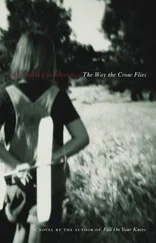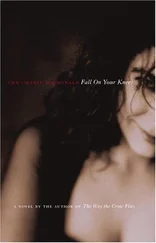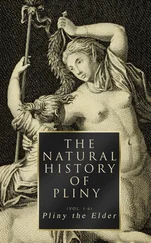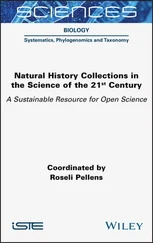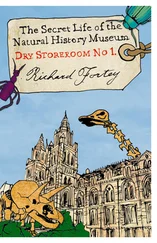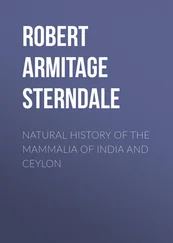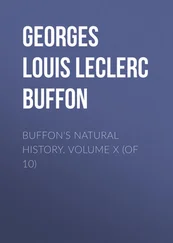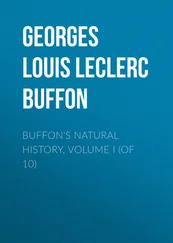Perhaps it is no surprise that Ann-Marie MacDonald would tell a truly postmodern tale set at the height of the great project of modernity, for paradox is her centerpiece, while story is her form:
PEARL. Doctor, you look at us and see a jumble of unrelated, distasteful facts. I look and see affinities.
VICTOR. A story.
PEARL. That’s right. A plot.
Deeply implicated in our own histories of family and culture, MacDonald takes the socially “natural” configuration of family and paradoxically asks how sure we can ever be of the constitution of family. If it is the case that “we are free agents as well as products of history, accidental and inevitable, like the best stories,” then family can be imagined and can further set our psychic apparatus in motion, as in a wish. Our roots/routes to family are multiple.
Pulled, as always, by the reconciliation of opposites, Ann-Marie MacDonald has an unquenchable fascination with puzzles and a certain penchant for the comic turn:
PEARL. I don’t believe in ghosts.
FLORA. That’s of nay concern to the ghosts.
Seeking to regain the lost laughter of childhood, she can rarely resist a pun or the opportunity to find the playful in the serious, especially, she explains, when she writes for the theatre. In an interview published in 2003, MacDonald describes what she does as driven by a “love of the audience” and a “love of performing:”
I found a great intellectual hunger and curiosity, combined with a love of stories and a love of the fabulous … I want to give the audience a reason to stay, give them a reason to want to find out more and to want to identify with different points of view, different experiences. For me, that’s my hardcore passion: put yourself in someone else’s shoes.
As we move into the final scenes of Belle Moral , MacDonald’s love of the fabulous is in full force; the secrets, laid bare. For lies never protect us, as poor Dr Reid must learn. “Knowledge is power,” said Sir Francis Bacon in the sixteenth century, and this became a slogan of the Enlightenment midway between his time and our own. Since then, the closet doors have burst open … tant mieux! We need to know our stories and let the ghosts out.
Kathleen Gallagher is Associate Professor and holds a Canada Research Chair at the Ontario Institute for Studies in Education, University of Toronto (OISE/UT). She has published many articles on drama, education, and the sociology of arts, and her book Drama Education in the Lives of Girls: Imagining Possibilities (2000) received the American Education Research Association’s book award for significant contribution to Curriculum Studies. Her edited collection How Theatre Educates: Convergences and Counterpoints with Artists, Scholars, and Advocates, (2003) argues for a broader understanding and definition of theatre as an educative force .
Belle Moral: A Natural History
Dramatis Personae
THE BRIDE
THE JACKAL
PEARL MACISAAC, thirty-two, an amateur scientist
FLORA MACISAAC, a lady in her late fifties / early sixties
VICTOR MACISAAC, Pearl’s younger brother, twenty-seven
YOUNG FARLEIGH, an elderly servant
DR SEAMUS REID, a gentleman in his late fifties / early sixties
PUPPY, a black dog with a flat head for patting
MR ABBOTT, a solicitor in his thirties
WEE FARLEIGH, a young and handsome servant
THE CREATURE
CLAIRE, a young woman
The action takes place in spring and summer 1899 on the coast of Scotland, a few miles outside Edinburgh, in a large old stone house called Belle Moral .
The Arab’s Mouth , an earlier version of this play, premiered at the Factory Theatre, Toronto, in the fall of 1990, with the following cast:
Pearl MARTHA BURNS Ramsay / Anubis / Mr Abbott DEREK BOYES Victor HENRY CZERNY Dr Reid DAVID FOX Flora PATRICIA HAMILTON Nun / Puppy / Creature MARTHA ROSS
Directed by MAUREEN WHITE
Designed by SUE LePAGE
Lighting designed by LESLIE WILKINSON
Sound designed by DAVID AKAL JAGGS
Dramaturgy by MAUREEN WHITE
and JACKIE MAXWELL
Stage Manager: MARIA POPOFF
Assistant Director: DEREK BOYES
(The role of Mr Abbott
was cut in subsequent revisions.)
Belle Moral: A Natural History was first performed at the Shaw Festival Theatre, Niagara-on-the-Lake, on July 7, 2005, with the following cast:
Pearl MacIsaac FIONA BYRNE Flora MacIsaac DONNA BELLEVILLE Victor MacIsaac JEFF MEADOWS Young Farleigh BERNARD BEHRENS Dr Seamus Reid PETER MILLARD The Jackal / Wee Farleigh JEFF MADDEN The Bride / Creature / Claire JESSICA LOWRY Mr Abbott GRAEME SOMERVILLE
Directed by ALISA PALMER
Designed by JUDITH BOWDEN
Lighting designed by KEVIN LAMOTTE
Original music composed by PAUL SPORTELLI
Stage management by
Joanna Jurychuk and Christine Oakey
The Playwright would like to extend
her thanks to Paul Birt, Jerry Doiron ,
Margaret Gaffney, Jean German, Denis Johnston ,
John Hugh MacDonald, Jackie Maxwell ,
Nadine McInnis, Alisa Palmer and Maureen White .
Scene 1 The Underworld
Night. Sound of the sea. A BRIDE enters, dressed in a flowing white gown, and veil that covers her face. She is searching for something by the light of her candle. Delicate distant melody, “Au Claire de la Lune”. In one corner, lies a faded tartan blanket; sound of an infant crying . THE BRIDE is drawn toward the blanket. Sound of a bagpipe drone . THE BRIDE picks up the blanket, then pauses, sensing the presence behind her: it is a man with the head of a jackal reminiscent of Anubis. There is a formality to his movements. He is neither malevolent nor benevolent, merely a guide, a conductor of souls to the underworld. He claims the blanket from THE BRIDE, and blows out her candle. Ambient female cry, “Pearl!”
Scene 2 Pearl’s Study at Belle Moral
Night . PEARL is sitting bolt upright at her desk, eyes wide, having just awakened from the nightmare. She is dressed in high-collar blouse and neatly tailored tweeds. Her study is a model of Victorian polymathic precision: books, fossils, butterfly case, skulls of various species, a telescope, a microscope. Her desk is littered with papers and in one corner of it sits a murky specimen jar. A knocking at the door . PEARL blinks .
FLORA [offstage] . Pearl?
FLORA MACISAAC enters with a lamp, a set of keys at her waist .
PEARL. Auntie Flora?
FLORA. Were you ridin’ the nightmare again, pet?
PEARL [business-like] . Perhaps I was. I don’t remember.
FLORA. You must endeavour to remember, dear. Your ancestors are tryin’ to tell you something.
PEARL. Which ancestors are those, Auntie? The apes or the amoebas?
FLORA. Do go to bed, pet, it’s nigh on three.
PEARL. I can’t, Auntie, I’m working. [crisp and efficient] I intend to submit an article on Cretaceous Caledonian mollusks to the Royal Geological Society in London, and this time I shall sign it, “Percival MacIsaac, Esquire”. See if they dismiss “Percy” with the same alacrity with which they advised “Pearl” to return to more womanly pursuits.
FLORA. What in the Lord’s name is that?
PEARL. The Cretaceous Period, Auntie, a fossil-rich –
FLORA. No, dear. That.
PEARL. Oh, that [picking up the specimen jar] . It is the tufted ear of a clinical idiot, upon which there is a point. Marvelous, isn’t it? Observe the whorls, the delicate lobe, at once so familiar, so … human; jarringly juxtaposed with the unmistakeable bestial peak into which the top of the ear resolves. And the thick growth of what could never be described as mere hair. See? Still glossy, gracefully suspended in sterile solution: fur.
Читать дальше

